El Salvador is a polarising destination that is often regarded as the ugly duckling of Central America. Normally, travellers only pass through the country on a bus, or skip it entirely.
The two most common perceptions about El Salvador are that it’s dangerous and that there’s nothing to do apart from surfing.
So many travellers bypass the country that there’s a common tourism tagline floating around: ‘Don’t skip El Salvador’.
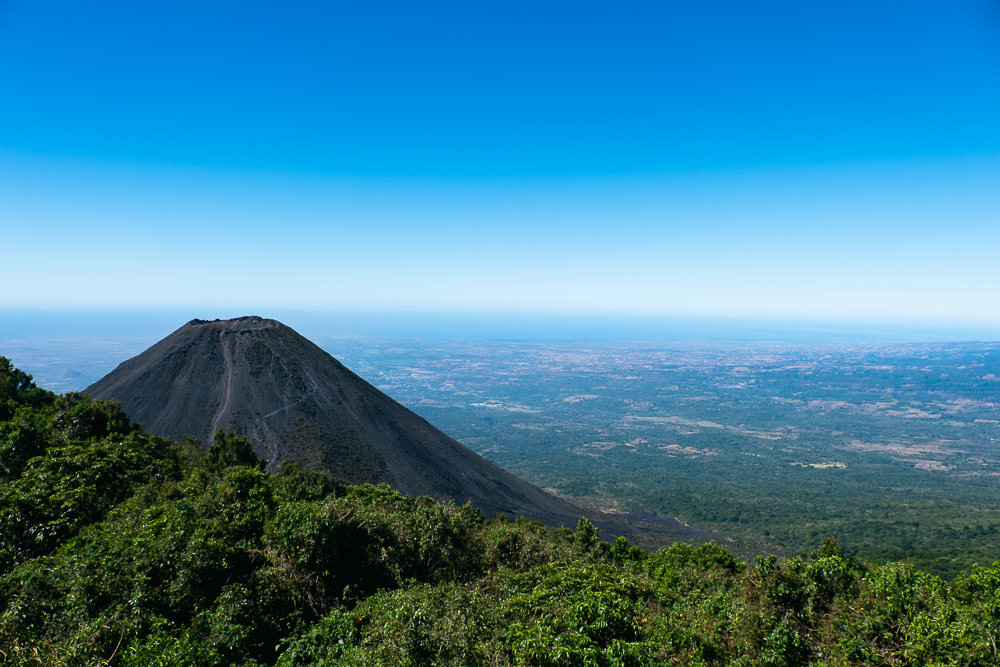
I too was contemplating skipping El Salvador. I’m thankful I did end up visiting, as in three weeks crisscrossing the country, I visited some stunning places and gained a lot of respect for the enduring nature of the locals.
El Salvador can’t be thought of as a hidden gem, as it’s in the middle of Central America and bordered by the popular backpacking destinations of Guatemala and Honduras.
But it’s an overlooked destination that deserves a lot more attention from travellers than it currently receives.
This guide to El Salvador will outline the reasons why you should visit, where you should go and what you should do, and all the essential facts you need to know to plan your trip.
Plan your El Salvador trip
Why go backpacking in El Salvador
Instead of the potential negative points about visiting El Salvador, here are the four main reasons why you should go to Central America’s smallest country.
1. Natural beauty
El Salvador is known for its pounding surf breaks and empty beaches. But what it isn’t as well known for are the volcanoes, lakes, national parks and hillsides dotted with flowers or produce.
There’s a lot more to El Salvador than just the beach and the best thing is that these natural spots aren’t overdeveloped or too crowded, yet.
2. Fellow travellers
El Salvador doesn’t normally attract travellers looking for a short one or two-week break. Which is a good thing, as it makes it easier to meet longer-term travellers, who are the ones that take the time to appreciate the country.
Aside from El Tunco on the coast, there isn’t much of a backpacking party scene in El Salvador. Instead, it’s a place where you can have some really genuine conversations with other travellers. The vibe and atmosphere in the hostels I stayed in was the best I have ever experienced while travelling.
3. The Salvadorans
Prior to arriving in El Salvador, I had hitchhiked twice in my life. After El Salvador, my tally was somewhere in the 20s.
For a country regarded as dangerous, I found all the locals I met incredibly welcoming and willing to help, all I had to do was stick a thumb out.
Hitchhiking was a great way to get around the country but, most importantly, it was a way to have a direct conversation with people you don’t normally meet on the tourist trail.
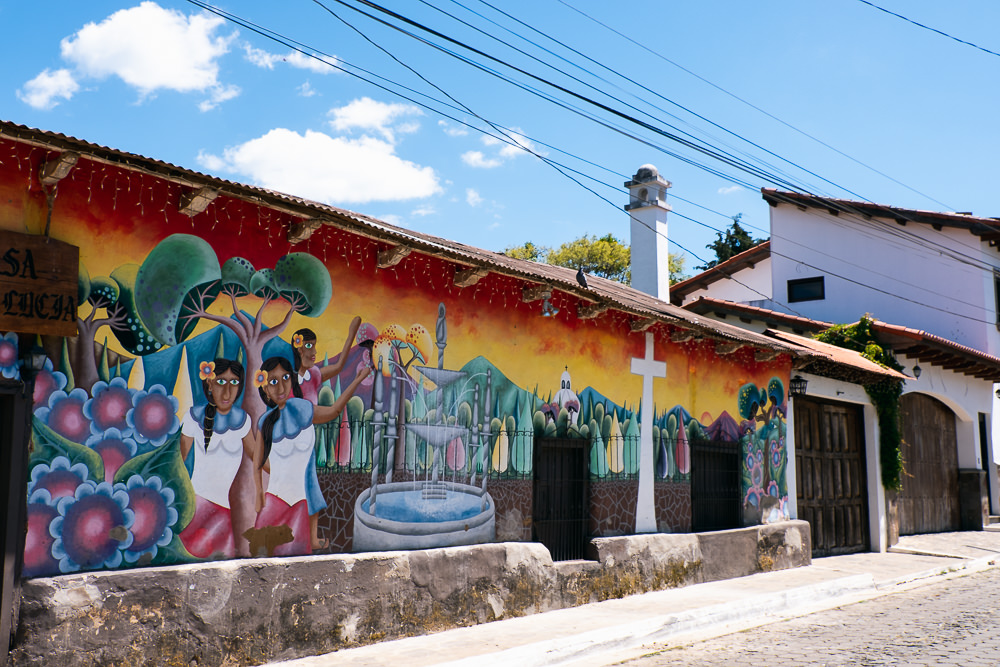
4. It’s quiet
If you want a break from hordes of tourists (I’m looking at you, Antigua), then El Salvador is a refreshing getaway.
I would be willing to bet El Salvador has the highest proportion of empty hammocks to tourists anywhere in the world, which makes it a country that ranks very highly in my opinion.
Is El Salvador safe to visit?
2023 Update: El Salvador is in currently a unique moment. Serious crime rates have dropped by 20x in recent years, putting the homicide rate on par with the United States. It should be mentioned this was accomplished through controversial means (sending suspected gang members straight to jail without trial), but it’s a fact that El Salvador has become far safer than it used to be.
Word hasn’t quite gotten out yet that El Salvador has changed, so now is your chance to see it before tourism inevitably increases and while enjoying a vastly improved security situation.
El Salvador has a chequered history, to say the least. Without delving too much into it, in the past 40 years, there has been a devastating civil war that lasted 12 years and numerous gang-related problems.
In 2015 and 2016, El Salvador was named the world’s most violent country outside of a war zone. In 2015, there were 17.7 murders a day. While that figure is alarming, it’s a lot less now and continues to drop.
Travellers are largely unaffected by these dangers, as most of the gang activity takes place far away from the tourist trail. But being a small country, there’s always a chance you may encounter danger, but that’s the same in any country.
I’m a grown man, but my parents back in Australia still expressed their concern as to why I would want to visit such a dangerous country. Unfortunately, that’s the perception of El Salvador that will probably stick around for a while.
In my opinion, El Salvador felt the same in terms of safety as Guatemala and Mexico. At no point did I ever feel unsafe in the country and I didn’t see or hear of any other travellers encountering problems.
A new government came into power last year, and from talking to locals, the country is now tracking in the right direction. So much so that the new president, Nayib Bukele, has an estimated approval rating of 90%.
Take the normal precautions as you would in any country in Latin America. Don’t walk alone at night and don’t show off any valuables. Also, always consult with your hostel or accommodation about what areas are considered safe for travellers, and what areas might not be.
El Salvador 10-day itinerary
I believe that 10-14 days is the perfect amount of time to explore El Salvador.
Below is my recommended itinerary for the country. If you’re arriving from Guatemala or Honduras, Santa Ana is the logical spot to start your journey. If you’re coming by air or from Nicaragua, then reverse the below suggestions, as you will likely be starting in San Salvador or El Tunco.
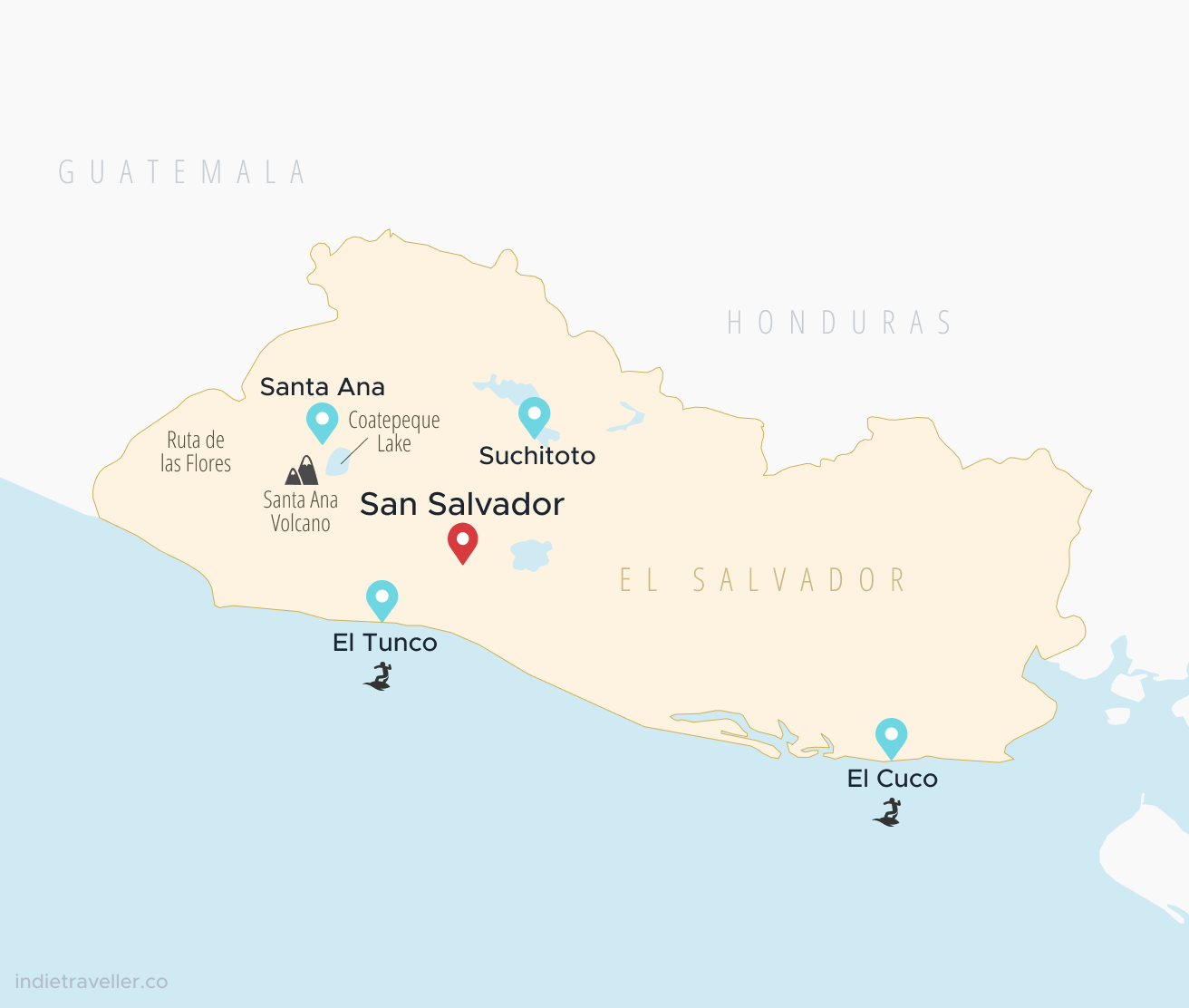
Santa Ana – 2 nights
Santa Ana is El Salvador’s second-largest city behind San Salvador and is located in the north-west of the country – close to the Guatemalan border.
I found Santa Ana nice, although not a place I would particularly like to spend a lot of time.
Upon arriving, go for a walk around the main part of the city. Of particular note is the Parque Libertad which is where the imposing neo-gothic Santa Ana Cathedral is located. I also really liked the Old Art School ruins which are located near the Parque Colon. The ruins are free to enter and never seem to attract a crowd.
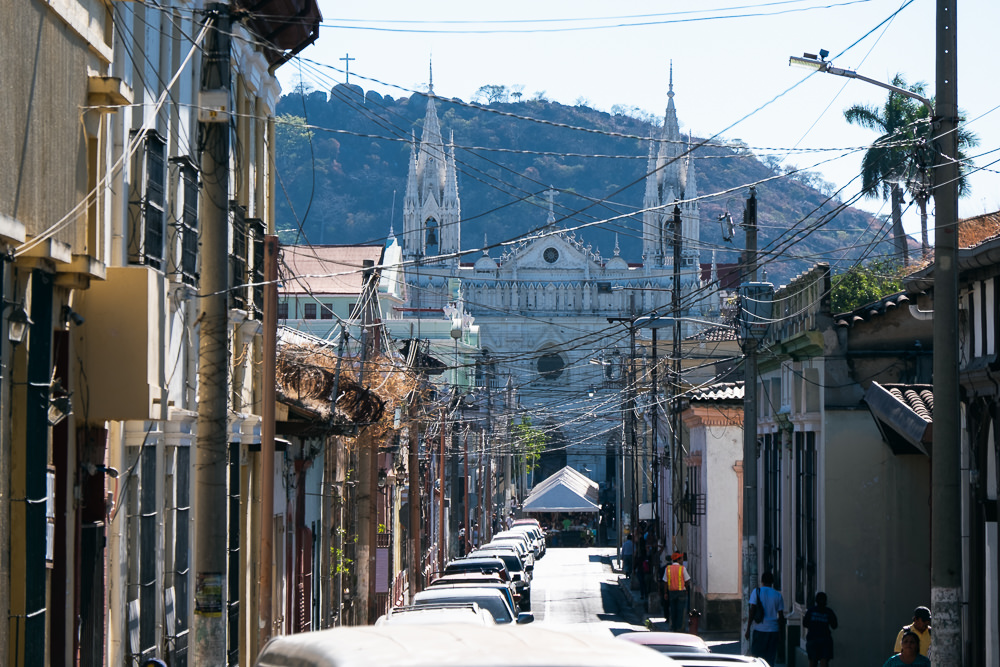
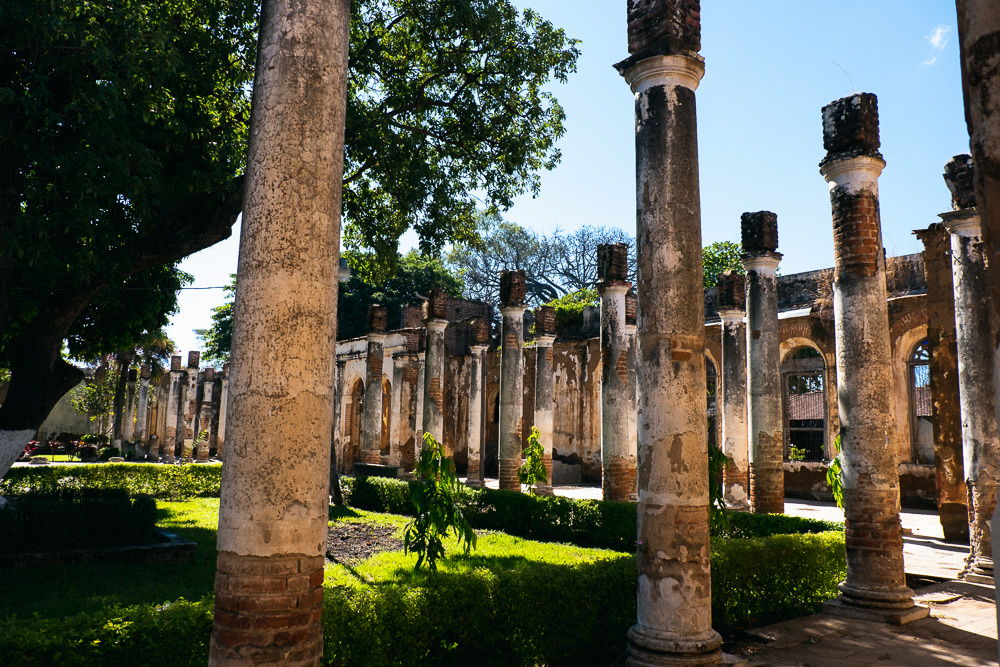
If you’re travelling to El Salvador from Guatemala or Nicaragua, you could be mistaken into thinking you’ve already seen the best volcanoes there are to see in Central America.
However, the hike to the summit of the Santa Ana Volcano is enough of a reason to visit Santa Ana and El Salvador. And unlike Actenango in Guatemala, it’s a cheap day out that will only cost you $12 USD.
Unless you want to pay $20 USD for private transport (which doesn’t include the entrance or guide fees), it’s best to catch the #248 bus from Santa Ana to Cerro Verde National Park. The bus leaves at 7.30am and the journey takes 90 minutes.
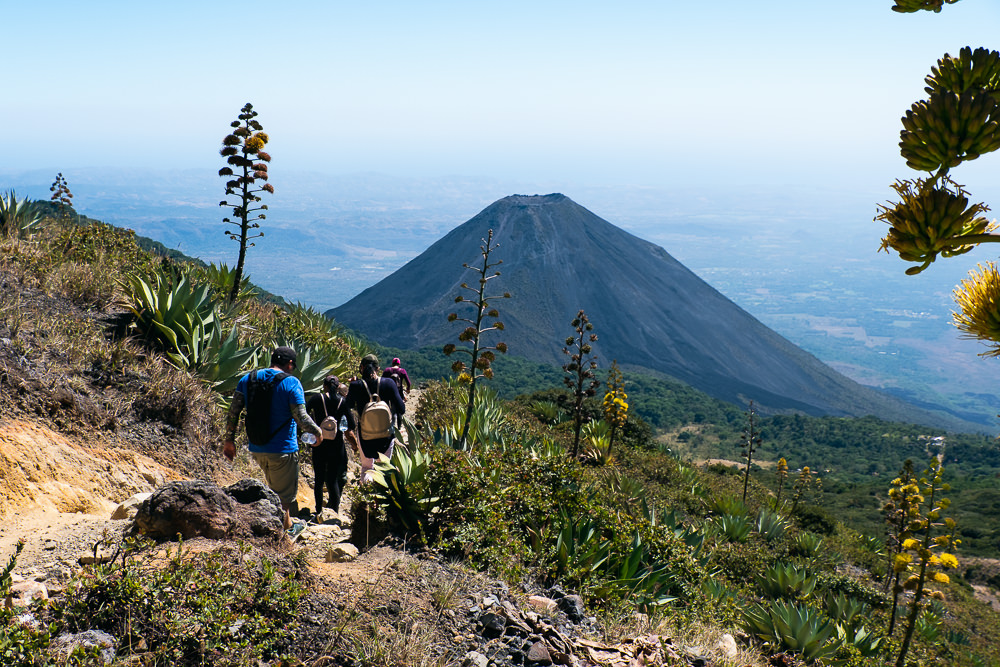
It costs $1 USD to enter Cerro Verde National Park. From here, you have until 11am before the tour to the summit starts. Cerro Verde has a range of street food at cheap prices and the view is also great. On a clear day you can see the coastline and even Volcano Fuego in Guatemala erupting.
At 11am in the main area, guides will start calling for interested hikers. It costs $1 USD for a guide and then a further $6 USD for a park ticket. As far as I’m aware, you can’t do the hike without a guide.
It takes around 90 minutes to two hours to reach the top of Santa Ana Volcano. While there are some steep sections, I found the hardest part of the hike was the sun and heat which are brutal above the treeline.
Tip: If you prefer to visit the park on a guided trip that includes pick-up and drop-off at your accommodation, check out this Cerro Verde National Park tour.
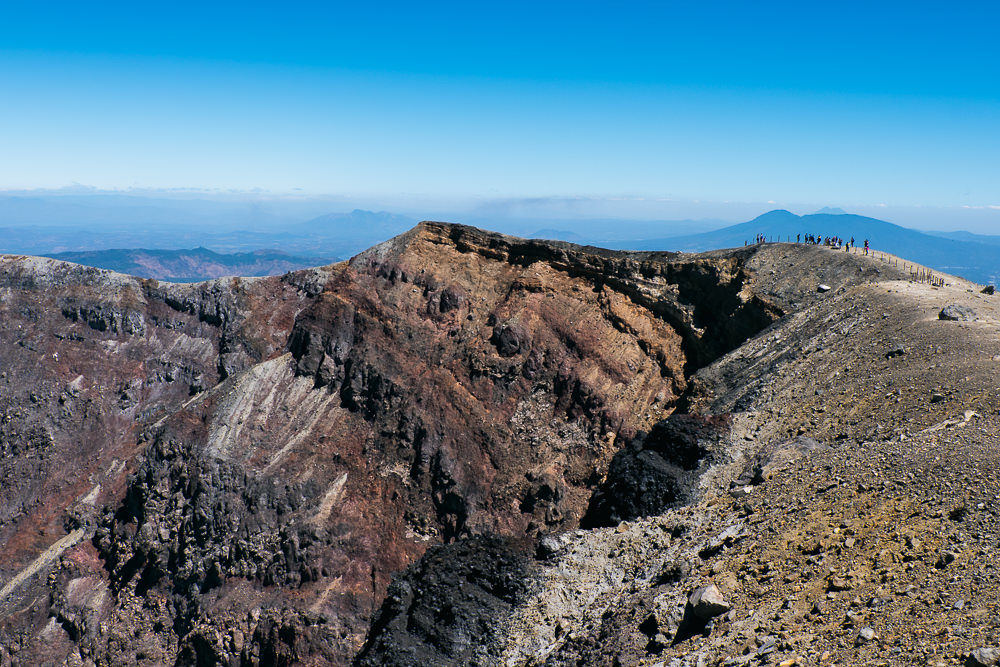
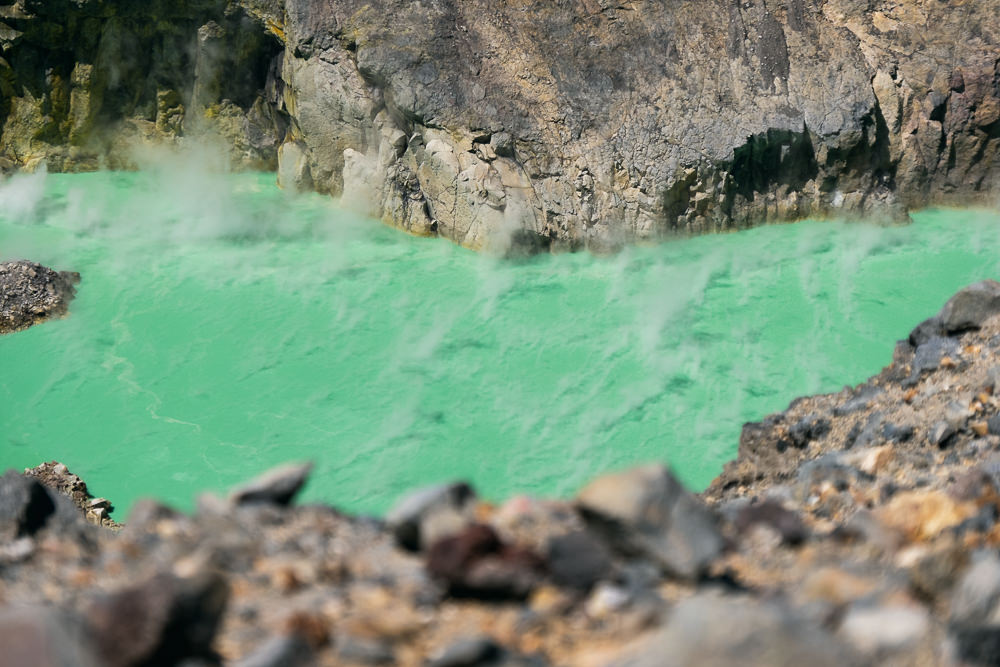
At the summit, there’s a vast crater containing a small lake with fluorescent green water. I was in awe of just how big the crater was, and it made the hike the highlight of my time in El Salvador.
After spending 45 minutes at the summit, the descent back down is easy. Once you arrive back at the main road, the #248 bus will return at 4pm to return you back to Santa Ana.
If you’re short on time, then from Santa Ana you can also visit Lake Coatepeque and the Ruta de las Flores as day trips, instead of doing overnight stays. I will go into more detail on these destinations below.
Where to stay:
Hostel Casa Verde is the best hostel in Santa Ana. It has dorms, privates, a terrace, a pool, plenty of helpful travel information and not one, but two of the best kitchens I’ve ever seen. Centrally located and $13 USD a night for a dorm bed or $25-44 USD for a private.
Where to eat:
If the kitchens at Casa Verde don’t inspire you to cook, then Simmer Down or Cafe Tejas are sit-down restaurants nearby with extensive menus. Or browse the cheap eats at the markets located near Parque Libertad.
Lake Coatepeque – 1 or 2 nights
To escape San Salvador on a weekend, most locals either head to the coast or to the enormous crater lake close to Santa Ana, Lake Coatepeque.
If you have the time, I would recommend doing as the locals do and also checking out Lake Coatepeque, which you can see from the top of the Santa Ana Volcano.
You can reach the lake by taking the #220 bus from the main terminal in Santa Ana. It should take around 90 minutes, depending on how fast the bus feels that particular day. If you want a quicker and more comfortable trip, take an Uber. You can also visit Lake Coatepeque with this organized trip that also includes Joya de Ceren and other sights.
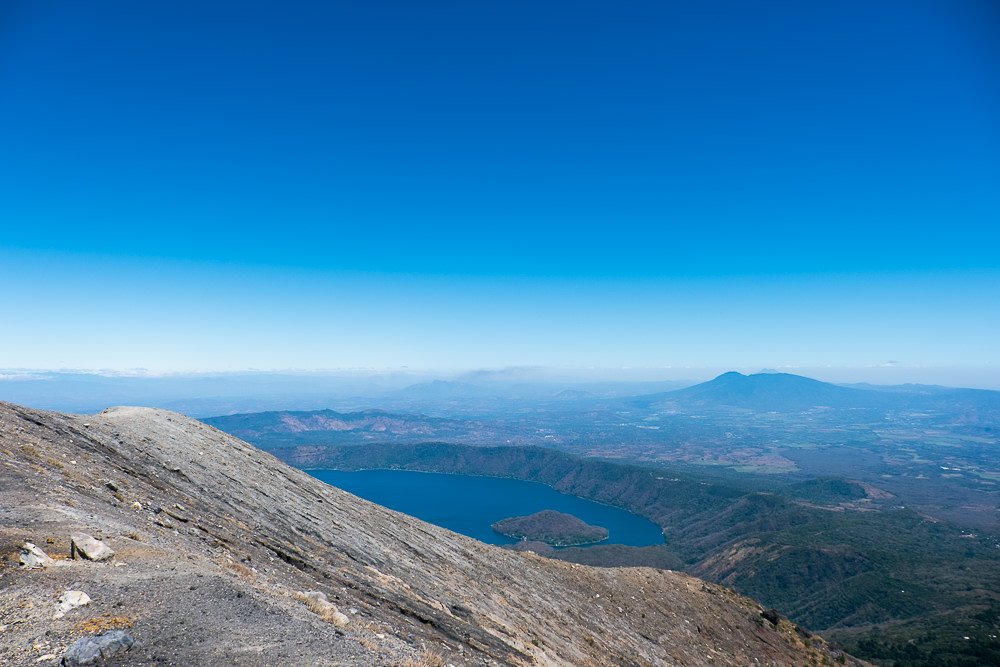
There isn’t much to do at the lake. You can go swimming, stand up paddle boarding or hire a jet ski. Or just relax.
If you feel energetic, you can explore around the lake on foot or a bike, but there’s really not much around or happening, just luxury private residences and very small towns.
I spent a couple of days here which was plenty of time.
Where to stay:
The lake doesn’t have many affordable accommodation options, so Captain Morgan’s Hostel is where most budget travellers end up. The hostel isn’t fancy but has dorms, privates, a kitchen and a bar. What the hostel lacks in normal (and clean) amenities, it makes up for with a huge deck overlooking the lake, complete with a diving platform and free stand up paddleboards and kayaks for guests to use. Try and visit during the week as the bar can be very busy with locals on a weekend.
Where to eat:
Captain Morgan’s has a small menu for breakfast, lunch and dinner. After seeing the state of the kitchen, I chose not to order anything and instead cooked my own food. Near to the hostel is Hotel y Restaurante Silver Lake which has a fairly standard menu and okay prices. A little bit further down the road is also a small pupuseria which is open every night. Apart from that, there’s not much else around. Buy plenty of food in Santa Ana to bring with you.
Ruta de las Flores – 2-3 nights
Head back to Santa Ana and then take one of the direct buses to the Ruta de las Flores (Route of the Flowers), which is a stretch of road linking Sonsonate and Ahuachapan, with numerous small towns in between.
As the name suggests, this area has flowers. Lots of flowers. Although, they are only in bloom between December to February.
I visited in March so I missed out on the flowers, but there was still plenty to see and do.
The main towns along the route are Juayua, Ataco and Apaneca. It’s very easy to travel between these towns on the #249 bus which runs all day.
Coming from Sonsonate, Juayua is the first stop, and this is where the popular seven waterfalls hike leaves from. If there’s one activity you do at the Ruta de las Flores, make it this one.
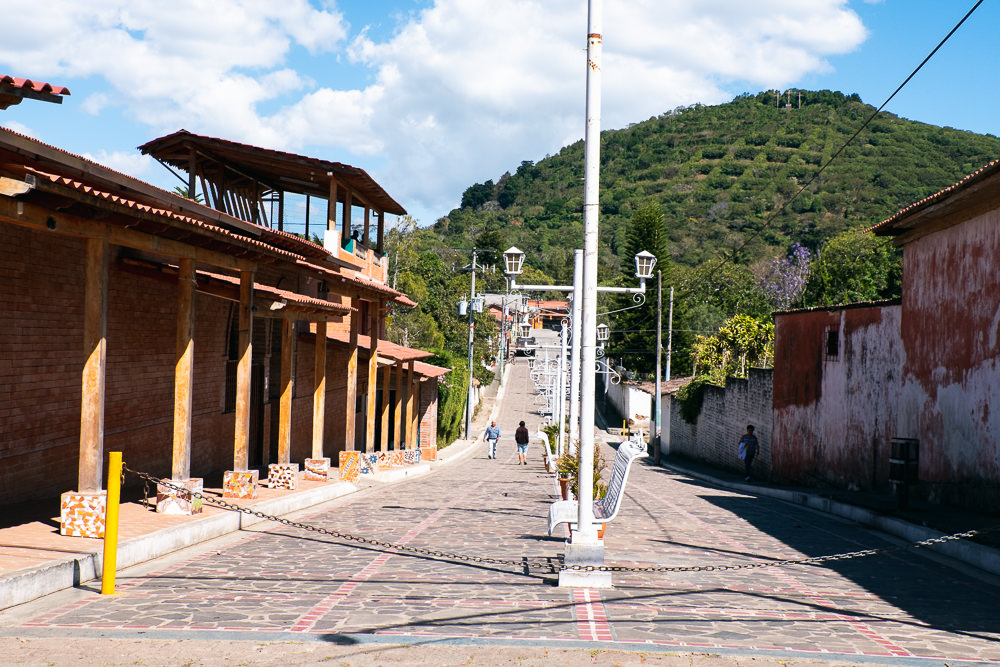
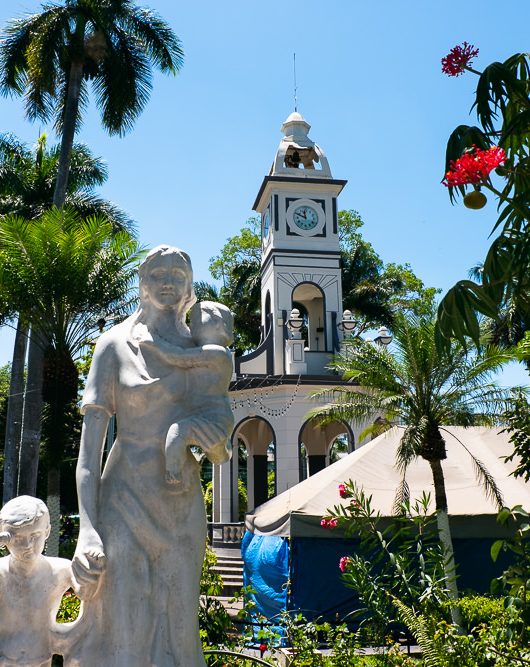
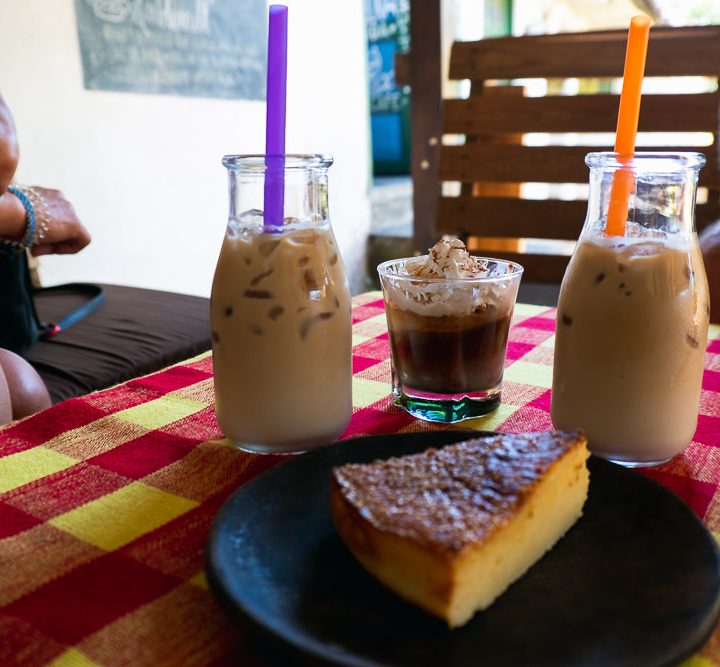
I lost count very early on, but I feel like in our half-day tour we visited way more than seven waterfalls, including the highlight which was the idyllic Los Chorros de Calera waterfall. The hike is moderate in difficulty and there is one exhilarating section where you rappel 40 metres down a waterfall.
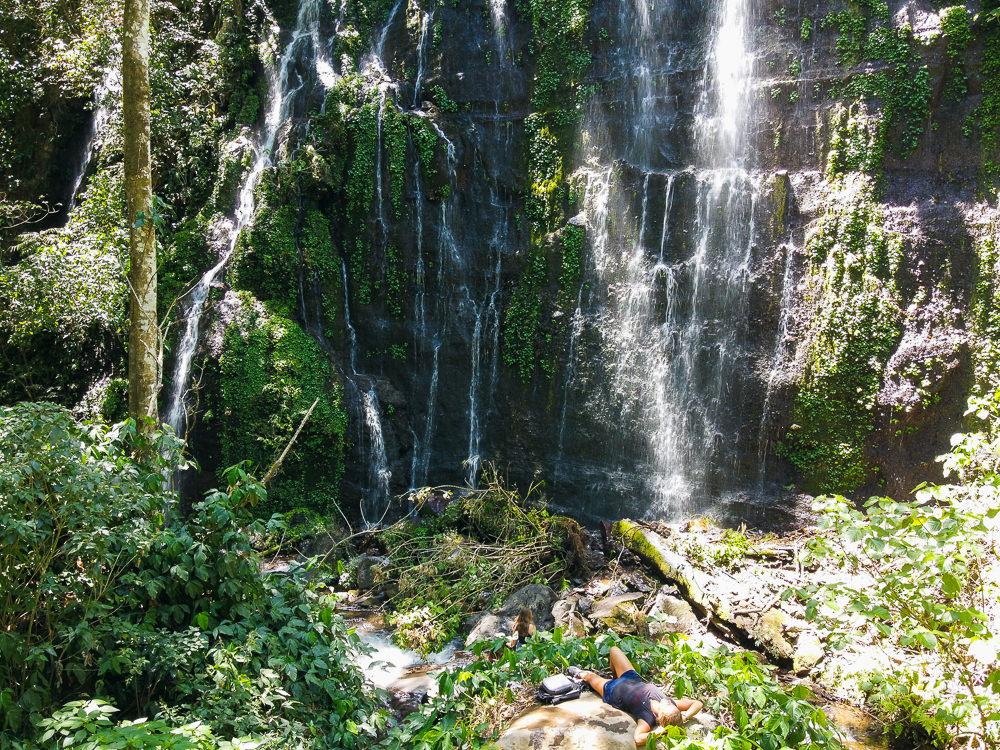
La Casa Mazeta hostel runs daily tours to the waterfalls. The price ranges from $15-25 USD depending on how many people are signed up on the day. This price includes one or two guides and a picnic lunch. Some touts around Juayua may offer the tour for cheaper, but since there’s a slightly dangerous rappelling section, I would recommend going with an established and proven tour.
Every weekend, Juayua hosts a bustling food market in the main square. So if it’s possible, time your visit with a weekend.
Apaneca is the next stop along the Ruta de las Flores. Channel your inner Maze Runner and head to Cafe Albania for the deceivingly tricky maze. It costs $3 USD to enter the maze and you can expect to be in here for anywhere from 10 minutes to an hour. My sense of direction is non-existent, so I was lucky my friend got us in and out in about 15 minutes. I heard stories of other travellers walking around for an hour, before eventually having to ask the staff for help to get out.
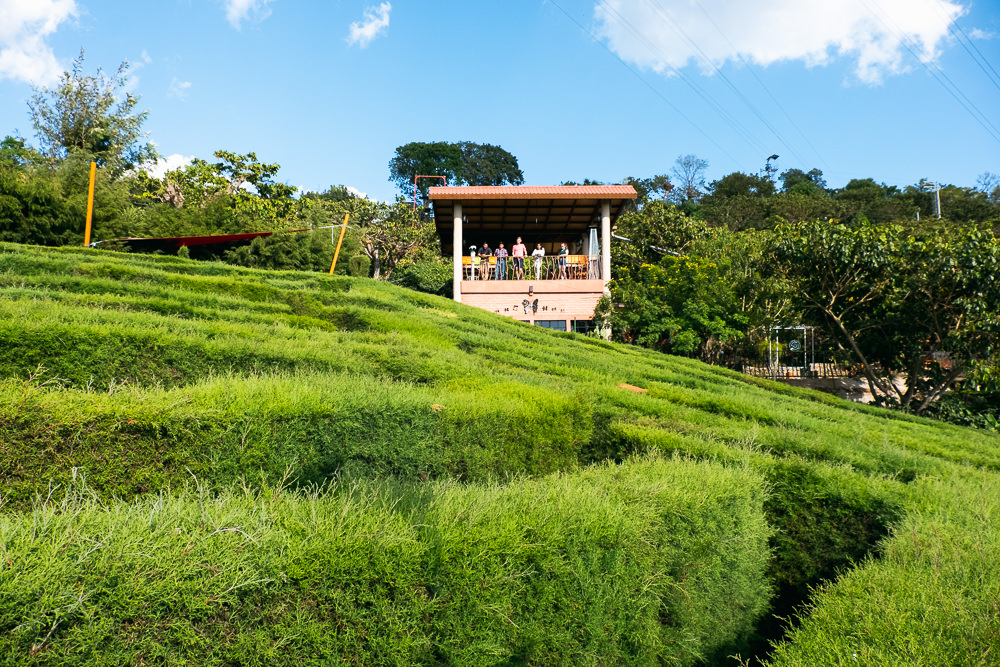
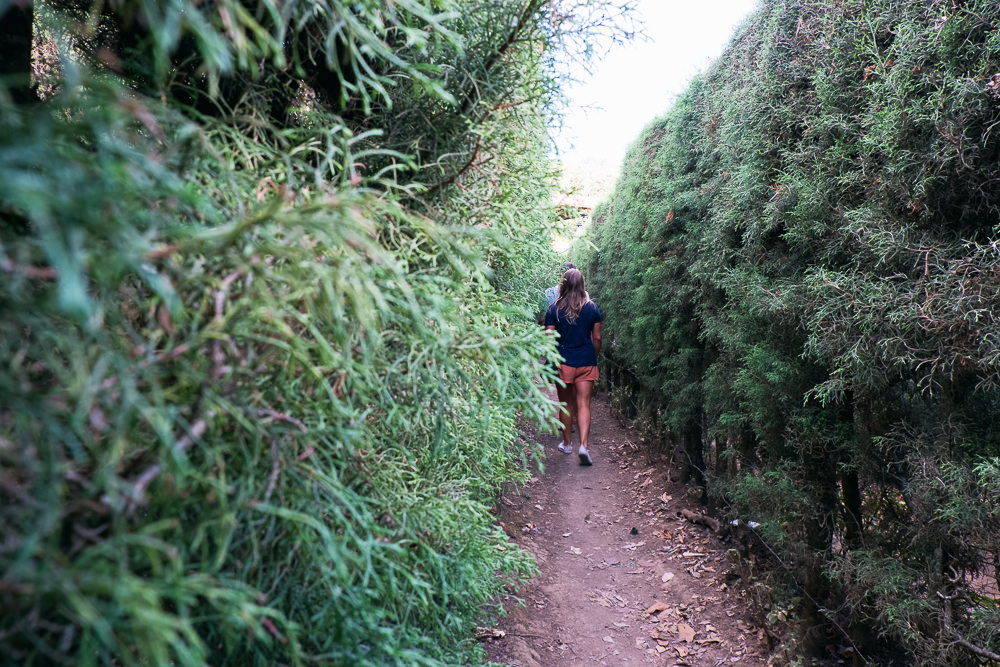
On the outskirts of town there’s also a zipline that whizzes through the forest. There are a dozen different lines which you can ride for $35 USD. Tours leave daily at 9:30am, 11:30am and 3pm from Axul Cafe, which also has the best coffee in town.
The last stop before Ahuachapan is Ataco, which is a very small town that is covered in pretty murals. Wander around the streets with no destination in mind and you’ll find a diverse range of artwork.
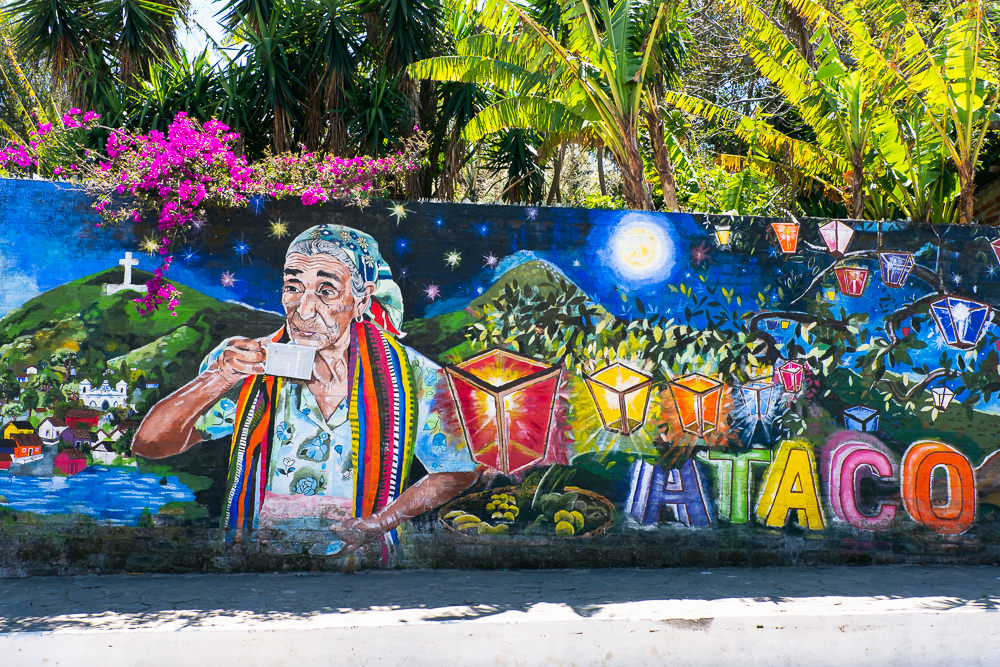
If you’re a caffeine junkie like many other travellers, Ataco has you covered with the El Carmen coffee plantation. There are a couple of different tours around the plantation and factory to see how the coffee is made, or you can just indulge at their on-site cafe.
If you still have energy left, the walk to the Mirador de la Cruz offers a great view out over Ataco and nearby hillsides.
There are also many hot springs along the Ruta de las Flores. The Santa Teresa Hot Springs, near Ahuachapan, has many different springs and it costs $10 USD to enter.
I did visit Sonsonate and Ahuachapan but I wouldn’t recommend spending too much time at either of them. They are both larger towns without the charm or character of the smaller towns.
Where to stay:
The two best towns for travellers are Juayua and Ataco. La Casa Mazeta is the pick of hostels in Juayua and has the usual variety of dorms and private rooms.
In Ataco, Mocha’s House is a new boutique hostel which doesn’t have dorm rooms but offers very affordable ($18 USD) private rooms.
I preferred Juayua so I stayed there for three nights, although you can’t really go wrong staying in either town. Juayua was more convenient for me, with the waterfall hike starting there and also the food market on the weekend.
Where to eat:
Simple. If you’re in Juayua on a weekend, go to the food market. During the week, La Rumba Cafe has lots of options and a beautiful terrace overlooking the town.
Ataco has a busy market area in the middle of town with lots of food options, or try Comedor Popular for a very cheap sit-down meal.
San Salvador 0-2 nights
San Salvador is the capital of El Salvador and similar to neighbouring capitals like Guatemala City and Tegucigalpa, it doesn’t have the best reputation for safety. (Going on a full day tour of San Salvador may provide you a safer alternative to exploring independently.)
Most travellers only visit San Salvador for the airport or as a transit stop before, during or after a long overland journey.
I spent three nights in San Salvador. I felt safe the entire time but the city just had nothing going for it. I stayed in the upmarket Zona Rosa area which was very uninspiring with plenty of American fast-food chains, shopping malls and expensive restaurants and bars.
The highlight of my time in San Salvador was the free (tips-based) walking tour around the downtown area.
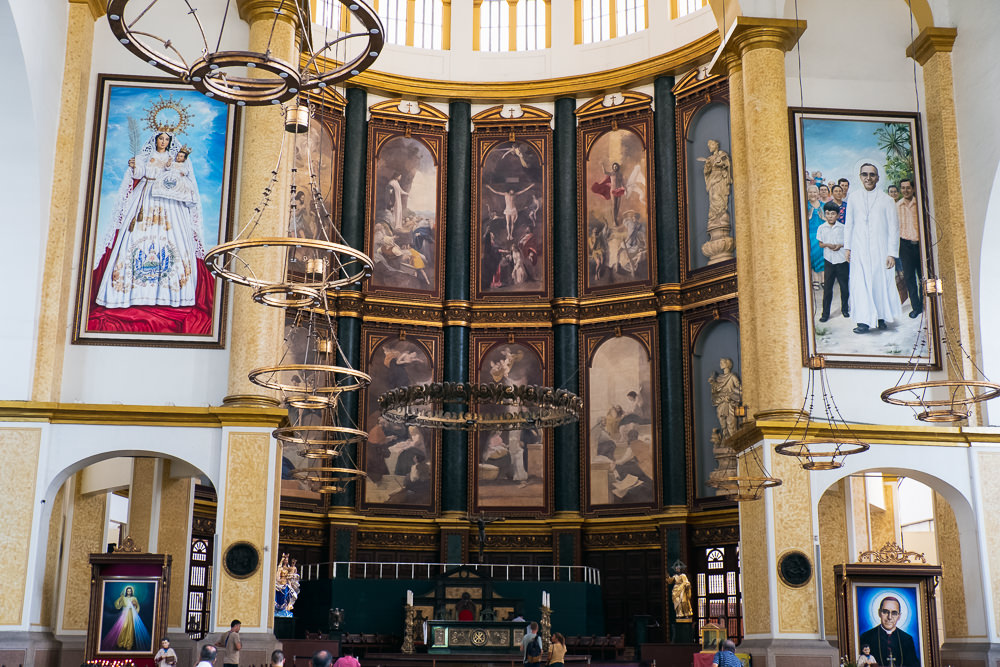
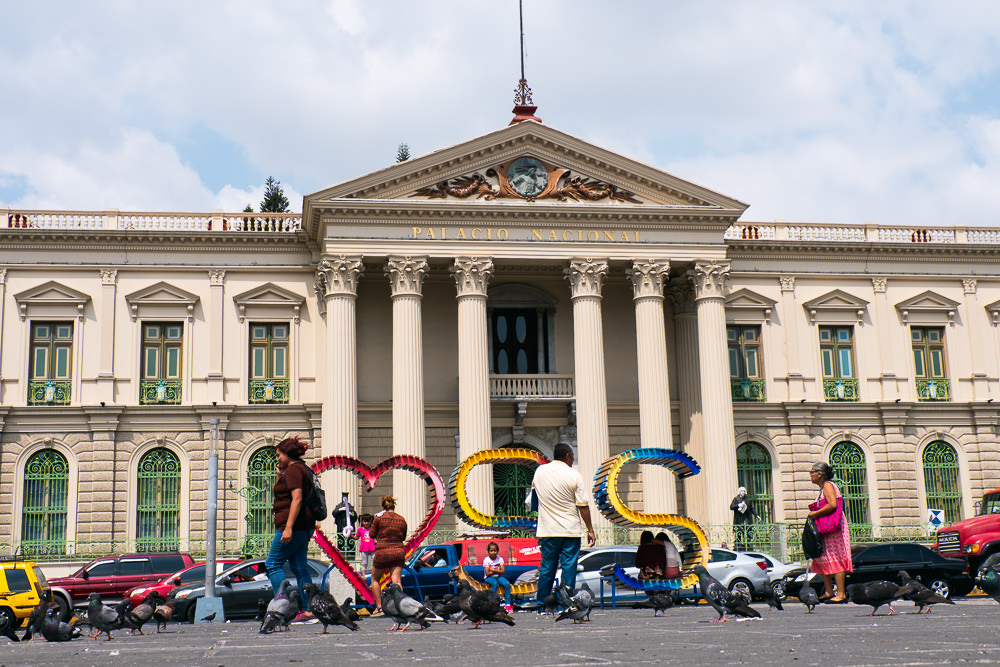
This tour started in downtown San Salvador and visited a number of churches, markets and significant buildings over 2.5 hours. Our guide, who spoke perfect English, also provided a detailed history of El Salvador which was great to hear. The highlight of the tour was the distinctive Iglesia El Rosario, which has colourful stained glass windows which create rainbow-like reflections on the ground. It was unlike any other church I’ve seen.
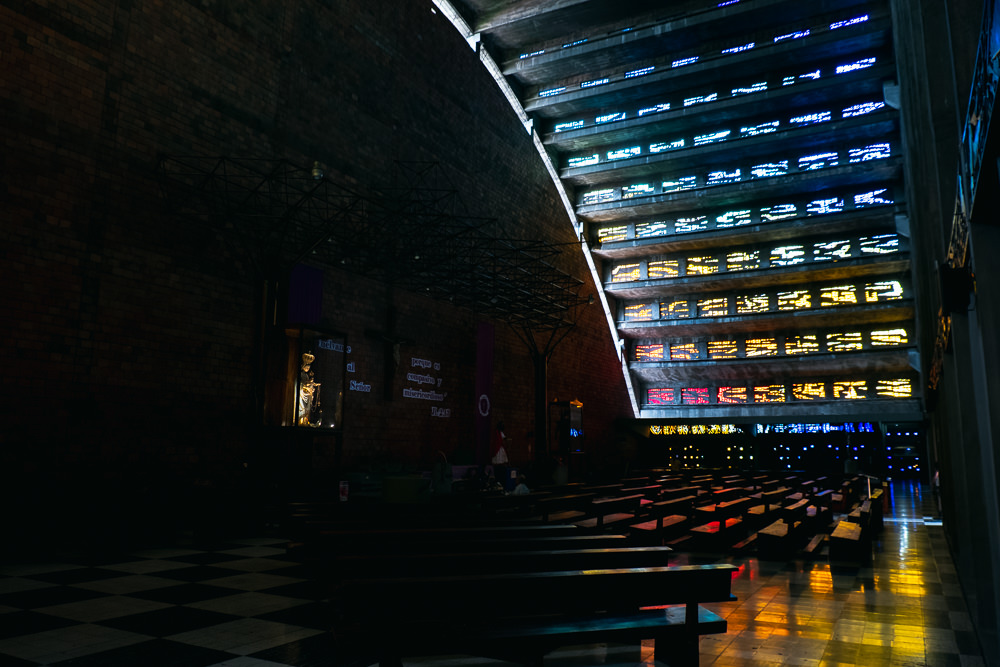
Other things worth in San Salvador are a trip to the San Salvador Volcano just outside the city, or a day-trip to Lake IIopango.
And that’s about it. A night or two in San Salvador is the most I would recommend. Although, don’t feel like you’ve missed out on anything exceptional if you skip San Salvador.
Where to stay:
The hostels in San Salvador are pit-stops. I stayed at the La Zona Hostel which was very average. One other traveller I met had similar feedback about Hostal Cumbres del Volcan Flor Blanca. Consider looking at Airbnb or Couchsurfing if you are staying in the city for longer than one night. The areas that are considered the best for travellers are San Benito, Zona Rosa, Escalon and Maquilishuat.
Where to eat:
In downtown, there are many cheap pupuserias or local restaurants where you can grab a great meal for $2-5 USD. In San Benito and Zona Rosa, there isn’t much other than an abundance of overpriced restaurants and fast-food chains. There are lots of supermarkets around if your accommodation has a kitchen to use.
Pacific Coast – El Tunco and surrounds 4-5 nights
If you’re visiting El Salvador, chances are high that you plan on visiting the beach at some point. For many travellers who enjoy surfing, this is the main reason they come to the country.
One hour by road from San Salvador on a bus will take you to La Libertad, which is the entry town to the coast. Don’t stay here, as it’s a pretty dirty and dreary place. But, depending on how long you stay on the coast, you may end up back here for the two large supermarkets that are in the middle of town.
Just up the road from La Libertad is the most popular beach for travellers and surfers: El Tunco. Here you will find many shops, restaurants, bars and accommodation options. It can get very busy, especially on a weekend when locals escape San Salvador for a beach break.
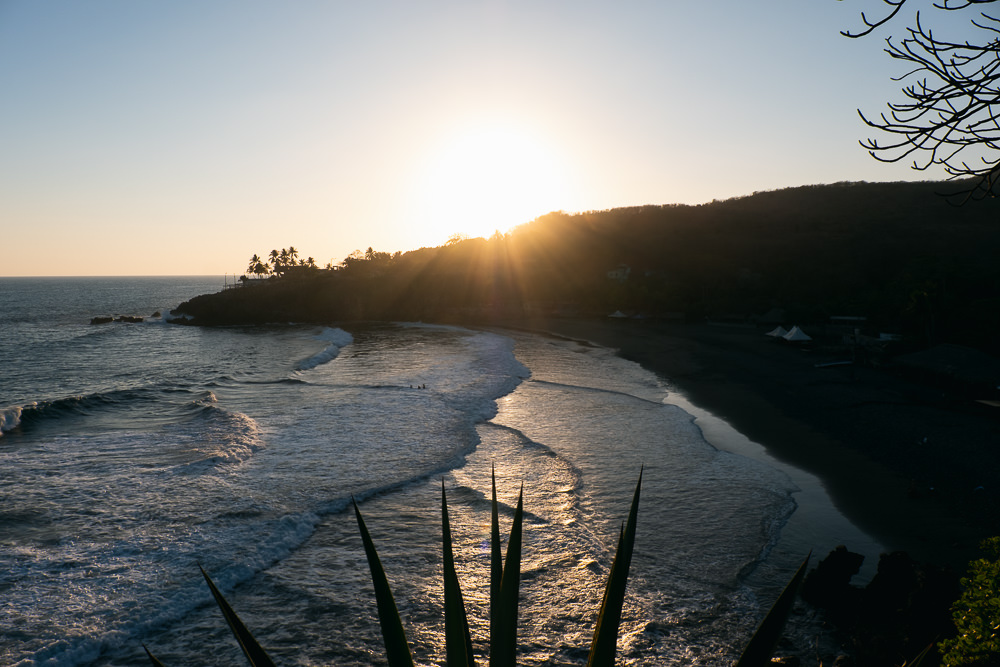
The waves at El Tunco are epic, which is why so many surfers stay here, but it also means the lineups can be crowded at times.
For a more relaxed, slightly hippy spot, check out El Zonte, which is a further 10km away. El Zonte is often described as what El Tunco was like 10-15 years ago.
The waves are just as good and much less crowded, but prices for accommodation and food are higher, and there’s not as much choice.
I chose not to stay at either El Tunco or El Zonte, and I was very happy with my decision. I went for a spot in the middle of both towns, at a very quiet beach town called El Palmarcito.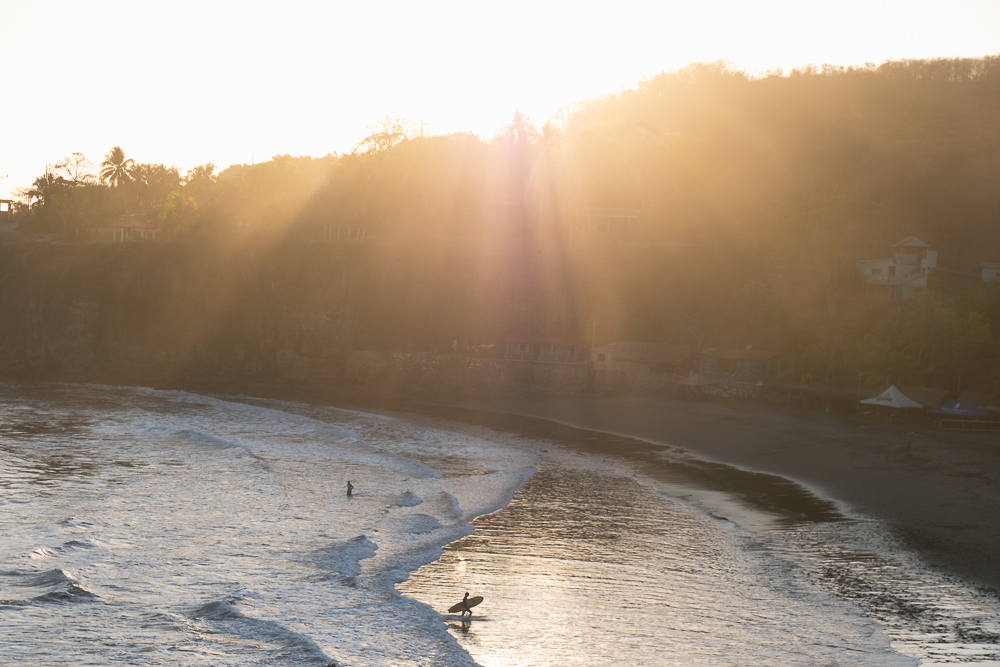
There’s not much at El Palmarcito. Just a small shop, a pupuseria and a small road leading down to the beach that’s got more stray dogs and chickens than people. And there’s the beach, of course, which has decent waves and was deserted most of the time I was there.
After four days at El Palmarcito, I visited El Tunco for a day to see what it was like. This visit only reinforced how happy I was outside of the tourist bubble. El Tunco was loud, dirty, packed with tourists and had a lot of construction going on. I also visited El Zonte and found it slightly better, but by then El Parmarcito felt like home.
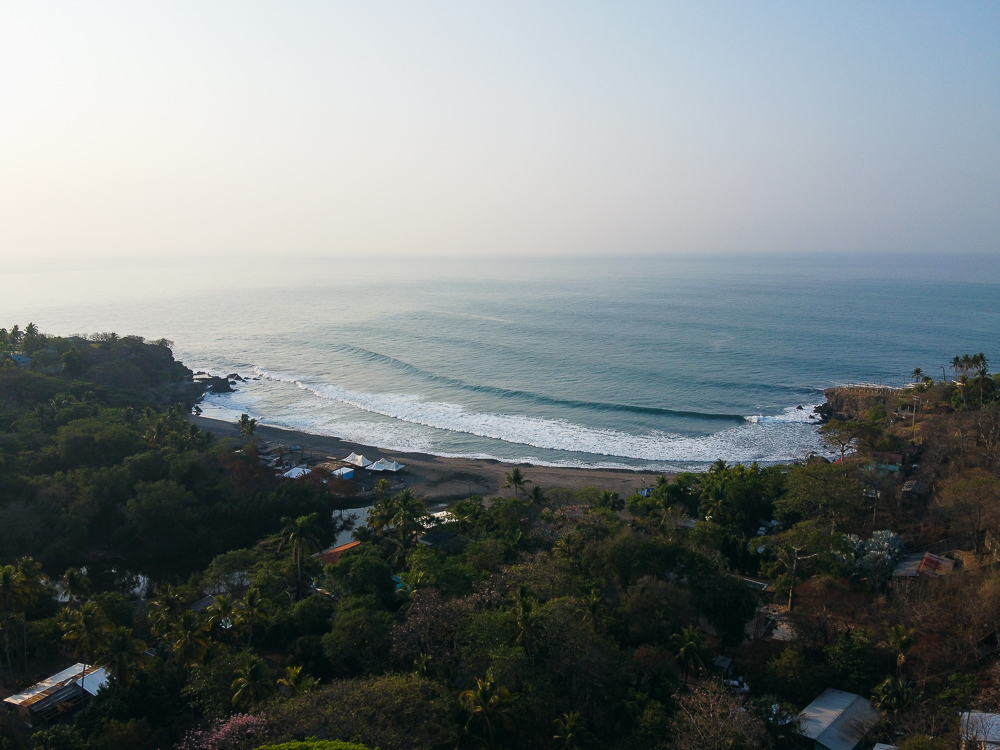
There are many more beaches along this stretch of coast and the best way to explore them all is by hiring a scooter or motorbike for the day. There are rental shops in El Tunco and El Zonte and the going rate is $15 USD a day for a scooter or $25 USD for a motorbike.
While the beach is the main attraction on the coast, the Tamanique Waterfalls are worth checking out if you have the time.
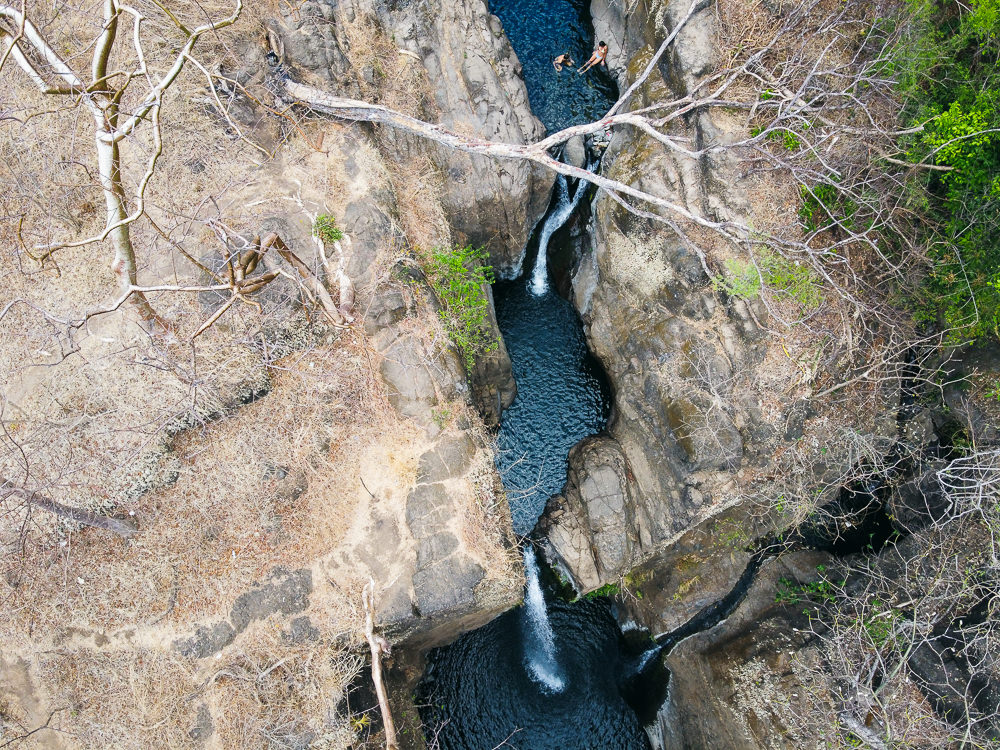
The waterfalls are in a valley near a small town called Taminique 20 minutes inland from El Tunco. It’s possible to get here via bus, taxi, private vehicle or hitchhiking.
Bring proper shoes as the waterfalls are a 30-minute hike from Taminque. It’s a steep and hot walk down, which means the way back up is tough.
I visited in the middle of the dry season and the waterfalls were still flowing well. There are a few different tiers and several deep and refreshing pools. Best of all, there are a few safe spots for cliff-jumping, ranging in height from 5-12 metres.
Where to stay:
If you want to party, surf, eat out a lot and be around lots of other travellers, stay at El Tunco. Papaya’s Lodge is renowned for partying while Tunco Lodge is a bit more laidback.
If you’re after a quieter version of El Tunco, with options for Yoga and other wellness activities, head to El Zonte. The Black Cat is popular with budget backpackers.
And if you want maximum relaxation and tranquillity, stay at the little slice of paradise that is El Parmarcito. Hammock Plantation is where I stayed and it instantly felt like home. Dorms, privates, a pool, a kitchen and great owners.
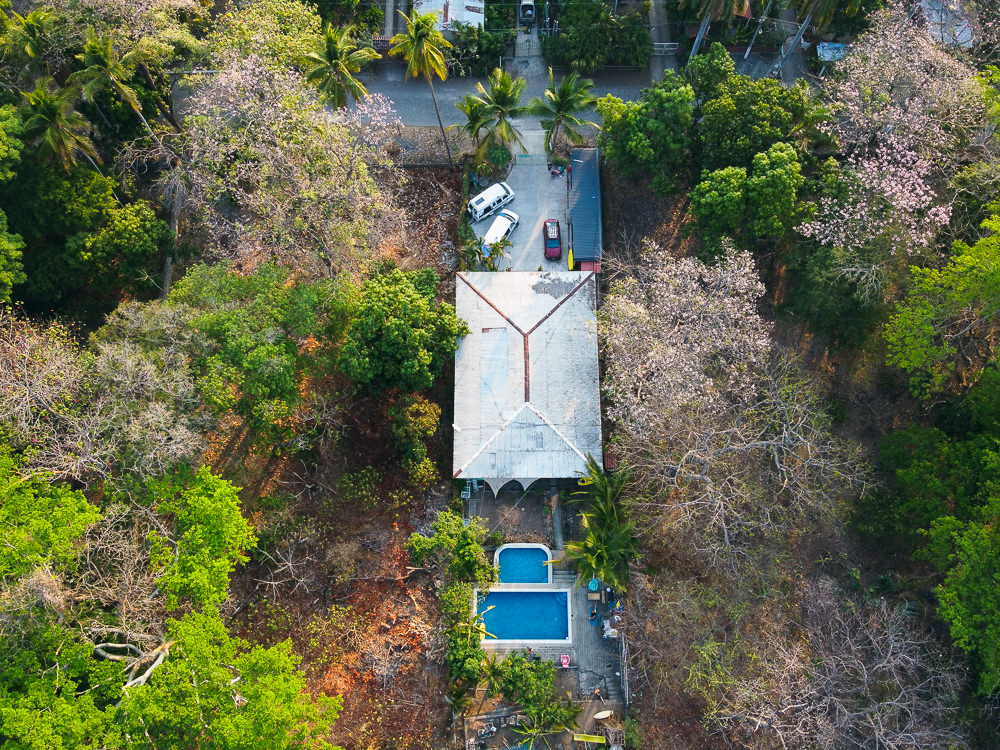
Where to eat:
Pupuserias are on almost every street corner along the coast. You really can’t go wrong with ordering a few pupusas for a cheap and filling meal. My favourite pupuseria was just near the entrance to El Parmarcito. Here they served up ‘pupusa locos’, which are a cross between a gigantic pupusa and a pizza.
In El Tunco you will find many restaurants catering to tourists, increasing in price the closer you get to the ocean. Restaurante La Bocana is expensive but serves up fresh seafood in a prime position to catch the sunset.
Merendero El Teco is a cheap and cheerful option in El Zonte, located right beside the ocean.
Other destinations
I also heard good things from travellers and locals I talked to about Suchitoto and El Cuco, although I didn’t get time to visit either of them.
Suchitoto is a small colonial town an hour’s drive north of San Salvador. It’s often described as the Antigua of El Salvador. There are waterfalls, hikes, a beautiful crater lake and quiet streets full of restaurants and bars.
El Cuco is near San Miguel in the east of El Salvador. It’s similar to El Tunco, although a bit more laid-back, and has epic surf breaks and decent accommodation options.
San Miguel is a city that is often forgotten about, but if you are visiting El Cuco, it’s worth spending a night here, especially in the last week of November for the raucous fiesta that is the San Miguel Carnival.
Travel costs in El Salvador
I found El Salvador one of the cheapest countries in Central America.
Accommodation is pretty standard price-wise. A dorm room in a well-rated hostel will set you back around $10 USD and a private room $20-25 USD.
Make sure your accommodation has a fan in the bedroom at a bare minimum. A pool also doesn’t go amiss due to the sizzling climate.
Getting around is very cheap on public buses. Most rides cost $.50 USD, although some drivers will charge you double if your bags take up a seat.
Food is very cheap, especially if you don’t mind the national dish of pupusas which can be found pretty much anywhere. Pupusas are a simple dish that is basically a corn and rice flour tortilla stuffed with cheese, vegetables, beans or meat. A cheese and bean pupusa almost always costs $.50 USD. Depending on how big your stomach is, a few of these will normally do the trick.
A normal meal in a local restaurant will be around $3-5 USD, while restaurants in tourist areas like El Tunco charge $10 USD or more for a main.
The standard rate for surfboard hire along the coast is $10 USD a day. Private surf lessons are $20-25 USD for an hour.
Where you save money in El Salvador is on experiences, as most things to do are free or very cheap.
Getting to and around
Most travellers enter El Salvador on a bus via Antigua in Guatemala, San Pedro Sula or Tegucigalpa in Honduras, or Leon in Nicaragua. While it’s possible to catch a sequence of public buses from one of these destinations to El Salvador, it’s easier and a lot more comfortable to take a pre-booked shuttle or bus.
As a guide, it should cost around $20-40 USD for a shuttle to El Salvador from Guatemala, Honduras or Nicaragua.
All decent hostels or tour agencies can help you book a tourist shuttle. If you opt for a bus, then I would recommend going with the reliable Tica Bus. Tickets can be purchased online which is handy. The other options for buses are Cristobal Colon (previously Platinum Central America) and Pullmantur.
If you’re arriving by air, the El Salvador International Airport is located near the capital of San Salvador. Well, by near, it’s about 40-60 minutes by car from San Salvador or El Tunco. It’s possible to catch a bus to and from the airport or a taxi will cost around $20-30 USD.
Once you’re in El Salvador, the easiest way to get around is by catching the local buses. These buses aren’t the most comfortable, especially if you are carrying a lot of luggage, but as the main towns are all close together, most of the journeys are only an hour or two. Expect to pay around $0.50 USD per bus trip.
Uber is available in Santa Ana, San Salvador and along the coast near El Tunco.
And as previously mentioned, hitchhiking is also an option for getting around, especially along the coast from La Libertad to El Tunco or El Zonte.
Travel tips
Currency
The currency of El Salvador is USD. ATMs are available in all of the larger towns and I wasn’t charged a fee for withdrawals at most of them.
When to visit
El Salvador is hot. Seriously hot. If you’re visiting, fill up your drink bottle and prepare to sweat.
The best time to visit is in the dry season between November and April. April is the hottest month on average.
The wet season runs from May to October. Often, this entails a late afternoon or nighttime storm and pleasant weather for the rest of the day. It’s not such a bad time to visit.
For most of the year, the daytime temperature hovers in the mid to high 20s celsius.
Language
Spanish is spoken in El Salvador. I found there were more locals with basic English than in Guatemala or Mexico.
Visa
El Salvador is part of the CA-4 group of nations that also includes Guatemala, Honduras and Nicaragua. For most nationalities, no visa is required for a stay of up to 90 days in this entire area (not in each individual country).
There is no fee for arriving in El Salvador by land, but there is a $10 USD entry fee if you arrive by air.
Some links may be affiliate links, meaning I may earn commission from products or services I recommend. For more, see site policies.
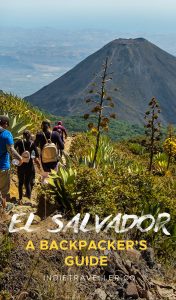
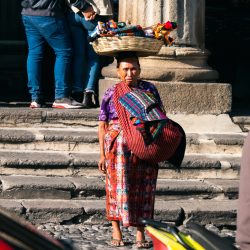
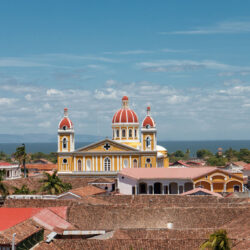




Thanks for your blog, it’s really helpful. We are currently travelling through Central America and plan to stop for a week or two in El Salvador but as you say its got a bad rep so great to read an encouraging article
Glad you found this useful. The homocide rate went down by 20X in recent years and is now on par with the US. El Salvador has changed quite a bit…